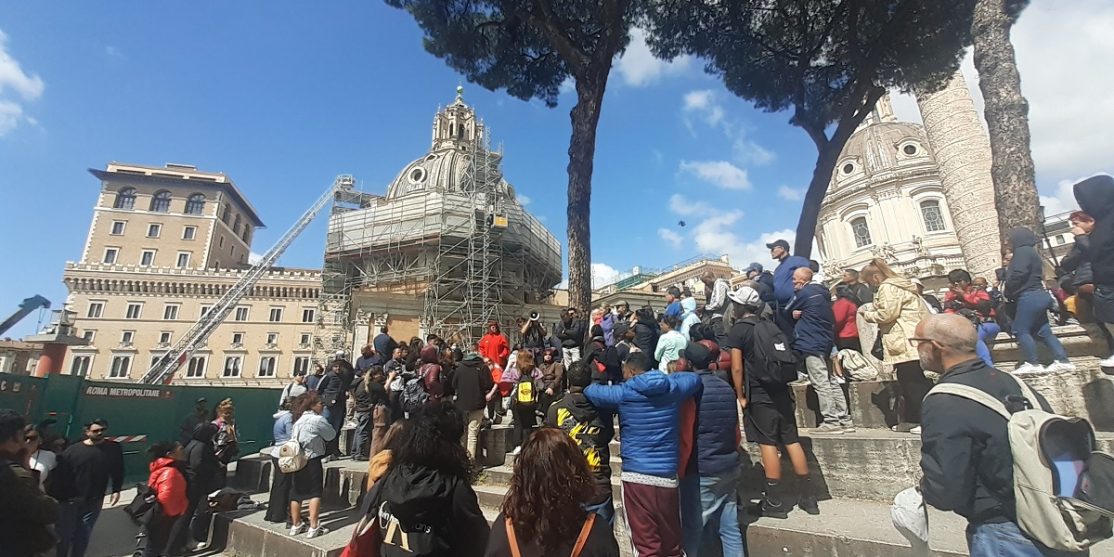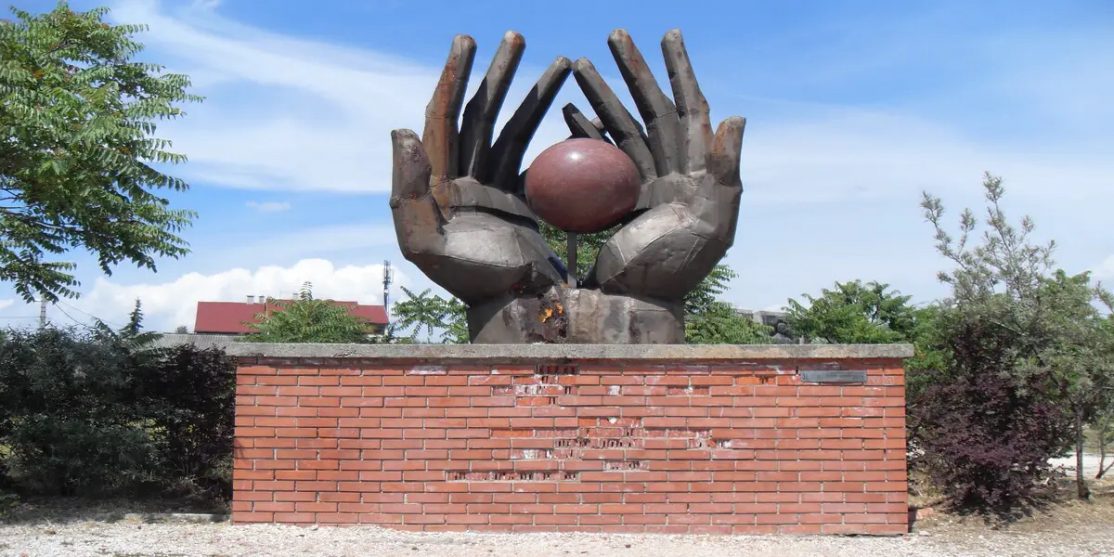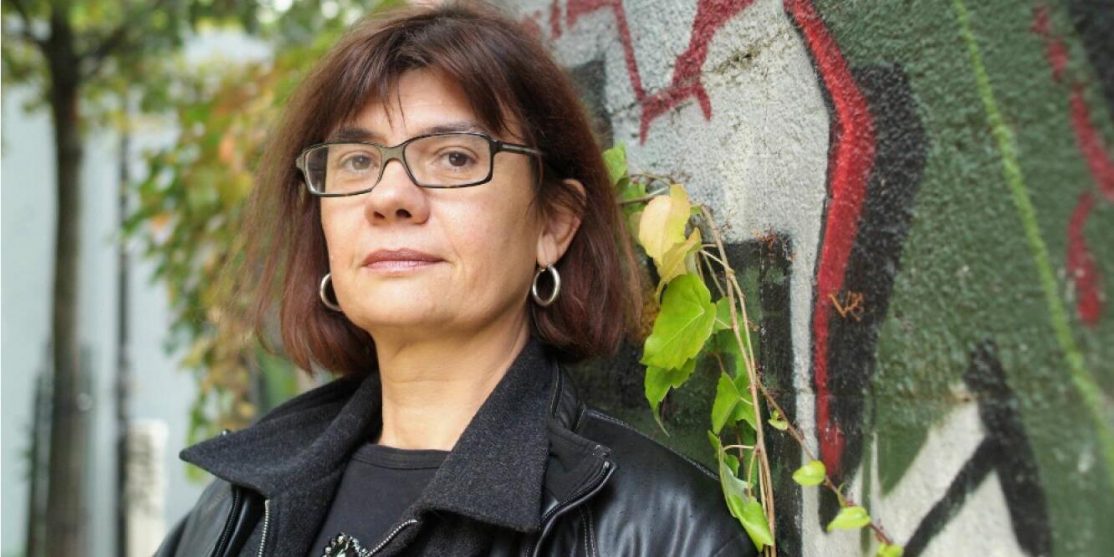EUROPA
Rome is under Eviction: Radical Democracy Against Austerity and Corruption

How can the fight for the commons be articulated with the fight for new (non)labour rights, basic income and minimum salary at the European level? Open questions starting from the experience of the last months in Rome: from ‘Rome is not for Sale’ to the writing of the chart for the commons.
Rome is under eviction! 800 hundreds social centers, house occupations, popular gyms, cultural, social and artistic associations are under eviction. Since the end of December hundreds of social spaces in Rome received letters from the Rome municipality asking the space back and the re-payment of supposed monthly rents.
To give an example the social center Auro e Marco, occupied in the ’90 in the suburbs of Rome, is supposed to pay back millions of euro for the occupation of a public building. The story that is not told in these letters is what happened in these buildings left empty by the institutions: services for the neighbourhood, Italian classes, gyms, popular restaurants, services for people with disabilities or mental problems, legal councils… And we could continue because in Rome, as in many other cities in Italy, the social centers have been the center of social, cultural and political activities, providing services that the State was not able to. These spaces have been re-opened for the city, not to make profit but to create sociality and politicization.
What is under attack is actually the deliberation approved at the end of the ’90, after a huge wave of occupations and struggles (Delibera 26), which permitted the legal recognition of social centres and the concession of controlled rent. In the years this deliberation has been used not only to recognise social centers, but as well cultural associations and all kind of social spaces. Today, this attack is launched by a technical administration of the city of Rome, since the elected council had to resign after one of the biggest scandal for mafia involving the management of public services (Mafia Capitale).
Further more, Rome is facing bankruptcy, years of mismanagement and corruption have accumulated billions of debts and swap contracts to pay back with very high interests. The project of Rome’s technical administration is clear: sell public assets and privatize the public sector to pay back the debt and be in compliance with the Fiscal Compact, that is mandatory not only at the state level but as well for sub-state actors.
But the story we want to tell is not the great history of squatting in Rome, but what we are doing nowadays: the campaign #RomaNonSiVende (Rome is not for sale) and the writing of the chart for the commons of the city of Rome. After several assemblies hold in different social centres under evictions, the campaign #RomaNonSiVende has called a demonstration: 20,000 thousands people walked in the streets of Rome against evictions, but as well against social services privatization, the selling out of public assets and corruption. A shift has occurred: a campaign against evictions has become a campaign to reclaim a different city: the city of solidarity, a city for all. Meanwhile a group is studying the debt of the city, days of local actions have been organized in different neighbourhoods, the assembly of #RomaNonSiVende has decided to write together a Chart for the urban commons of the city of Rome.
The Chart wants to introduce fundamental principles to preserve the urban commons, because they have to be recognised by Rome’s municipality and safeguarded by privatization and sale.
This Chart will define the urban commons (material, immaterial and digital), how they can be used by the citizens, and how they have to be protected. It is common what is commonly used and produced by citizens, but this use needs to preserve the good, service or space as common, so enjoyable by everyone. In this sense, we claim the establishment of a common right to use what is common: heritage, essential public services, social spaces, parks and water. The urban commons should not be sold, externalised or managed with invitation to tender. Rome’s technical administration is trying to control the actions of the future mayors approving laws and regulations until the last minute before elections. At the contrary we want to start a constituent phase, which tries to re-tack back the control from the bottom on the assets, the services and the city as whole.
The writing of this Chart opens many questions: how to write commonly a Chart for the commons? Which are the best tools to use, both on line and off line? How this Chart can become a real experiment of radical democracy? We are looking for inspirations at Barcelona and Naples, where many actions have been taken to recognise the urban commons and find new tools for radical democracy.
Even more, how can we articulate the fight for the commons and right to the city with the fight for new (non)labour rights, basic income and minimum salary? In our experience, this connection can happen in the fight against privatization of public services, where citizens and workers can encounter and organize themselves reclaiming back the welfare institutions. But we cannot take this connection for granted, it needs to be constructed in the struggles through a constructive dialogue between radical unions, citizen committees, precarious collectives and so on. Our cities are open to all kind of processes of privatization, speculation and capitalist exploitation, in our fights we need to recognise this urban exploitation as the other side of the exploitation on the living labour.
To conclude, #RomaNonSiVende is a direct fight against the Fiscal Compact, the debt brake and the strict imposition of balanced budget, in Italy strictly interconnected with new form of corruption and mafia organization. In this sense, the fight for the commons is a direct fight against the European austerity and neo-liberal reforms of Renzi’s government.
The problem we face in Rome and else where is: how can we go out from the strict space of the local? How can we connect these fights at the European level, since we are all fighting against European decisions?
We think that this European dimension needs to be constructed in the interconnection of radical democracy and the fight for new (non)labour rights, to be able to shape a new European spaces of struggles, that goes beyond the organization of single events.
And in somehow this is what France is showing.
Go to the website of decideroma




